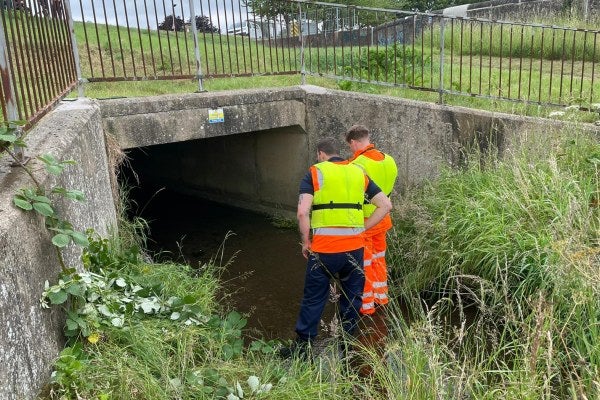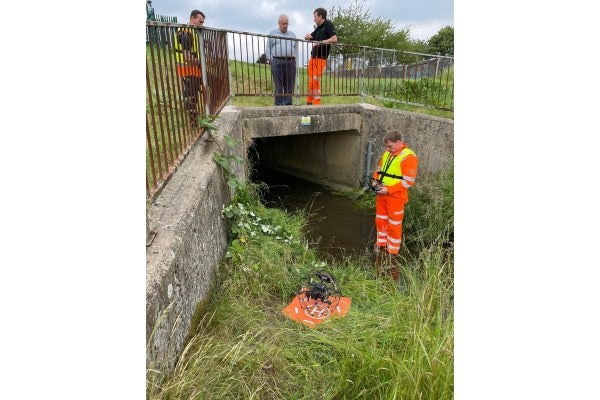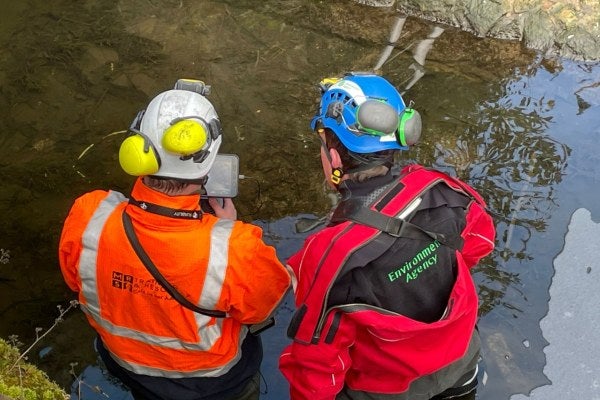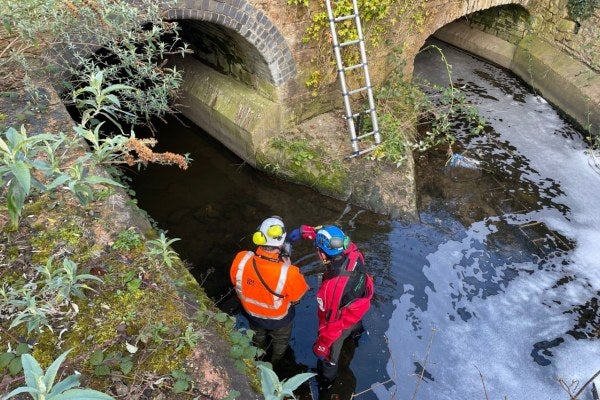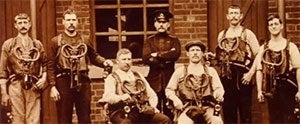Whether in public, commercial or industrial environments, inspecting confined spaces in water and utilities assets is often dangerous, time-consuming, and costly to perform. Not to mention the dangers once inside these confined spaces - with pipes and culverts which may hinder workers’ movement and ability to perform an effective inspection.
Specialist internal inspection drones are proven to be up to four times faster than traditional inspection methods for confined spaces – which greatly reduces the risk to safety.
The confined space inspection drones are equipped with on-board LED lighting and high-definition cameras housed in a collision tolerant carbon-fibre cage. This makes for an efficient solution for areas that require inspection or monitoring with limited space.
Key Benefits & Features
- Lowers Cost
- No Human Confined Space Entry
- Obstruction Free
- Reduced Downtime
- Oblique Lighting
- Thermal Camera
- HD Live Streaming
- 2D Measurement
- 4K Camera
- 3D Options
Our high-tech confined space drone reaches places more safely and cost effectively than any other solution.
Where can drones be used in water and utility internal inspections?
Due to their high-tech and compact features, drones have many applications for both water and utility confined spaces, ranging from low to medium and high risk spaces.
Pipeline surveys and inspections
Water pipes come in all shapes, sizes, and materials – including polythene/plastic and concrete. Pipes can run for many meters and are connected by joints which need inspecting for leaks and damage.
They can also experience blockages – unlikely when carrying fresh water – but effluent water can cause fats and block the pipes. So too can debris, vegetation, and protruding tree roots block pipes.
Pipes carrying water may also become corroded over time.
Water pipes need to be routinely inspected to check for these issues which is typically completed by a team of people to conduct the inspection with a rescue team on standby in the event of an emergency.
A drone can be used to complete the inspection with only a pilot which minimises the risk and cost of an extended team.
Aqueducts
Aqueducts are used to convey water from its source to a main distribution point such as a town, by operating valves at different points in the aqueduct journey. Many aqueducts are in difficult to access areas such as moorland or hills.
Traditionally when aqueducts are inspected, teams work in sections moving from one manhole entry point to the next to assess the given section of the aqueduct and check for cracks and defects.
Instead of taking vehicles and teams the full length of the aqueduct, a single pilot can, depending on distance, operate a specialist internal inspection drone to perform a survey without the need for anyone to enter the confined space.
Water Tanks
Potable water or run-off water tanks are incredibly large vessels that need to be regularly inspected and cleaned of algae and disinfected.
They are usually made of concrete, although some older tanks are made of metal – and are usually all positioned underground. The huge roof span is held up by a series of pillars and it is vital the condition of those pillars is checked to ensure no cracks or leaks are present.
Very often, the tanks must be drained completely, and teams of inspectors enter to carry out checks and general maintenance work, with a rescue team on standby.
A drone can save time and cost and reduce risk significantly by inspecting from one entry point, providing remote visual inspections, and pinpointing the location of any defects enabling minimal human contact.
Enclosed Culverts
Culverts channel river water through an enclosed area so it can pass safely under roadways or a town for example. Although covered from the elements, they are open at either end and can become blocked at the entrance or exit points from material that has travelled downstream.
During summer months when the rainfall is low, culverts can dry up and animals or humans may decide to enter them. What they leave behind can cause blockages too so culverts must be routinely inspected for obstructions and the integrity of the tunnel itself.
MRS Training & Rescue recently conducted an inspection of a culvert for the Environment agency - read the case study here. You can also see a short video of the drone in action inspecting a culvert here.
This inspection required just one drone pilot with the drone, instead of a team of 3 inspectors and a 3-person rescue team on standby – saving the customer significant cost and time as well as reducing risk for confined space working.
Cable / Communication Tunnels
These are concrete or brick structures underground with cables hung up at the side and can often be very deep underground. Routine condition surveys must be conducted to check for defects and cracks.
Electrical cables can start to create heat if they begin to deteriorate or breakdown.
The internal inspection drone can use its infrared capability to identify any hotspots within the cables themselves and conduct routine condition surveys with minimal human contact.
Access / Ventilation Shafts
Access or ventilation shafts enable workers to gain entry to many of the assets listed above. They can be very deep underground and may form several levels. They need inspecting to assess the structural integrity of both the material the shafts are constructed from and the furniture within them such as ladders, ducts and pipe way.
Many of these shafts have fans positioned along the length of them and if they breakdown, they can create an oxygen-reduced atmosphere in the tunnel. The drone negates the need for individuals to enter the space and thus reduces risk.
Penstocks
Penstocks or sluice gates are large valves that allow water to be released into a reservoir.
It is vital penstocks are inspected regularly as in certain extreme circumstances, if the penstock malfunctions – such as a severe fracture or a failure of power – it can cause the penstock to break up and parts can projectile off, with the potential to cause serious injury or harm.
A drone can observe the operational performance of penstocks, rather than putting people into an enclosed area to do the inspection, therefore reducing risk and saving time and cost.
